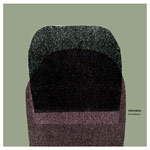News From Norway
INFORMATION : Biomekano (Rune Grammofon RCD 2024)
| |

|
'Synthesisers, programming, electronics' are the tools at the disposal of Per Henrik Svalastog and Jorgen Knudsen for this their third album. Looking at the equipment used here I felt that I was in for another sterile slice of twittering, dry electronica. But I found myself actually agreeing with the press release description, or part of it : 'it's a beautiful and razor-sharp production with plenty of depth and detail'. The duo are part of the Norwegian techno scene and are trying to shake off the tag 'arctic ambient' but to an extent this offers a clue as to what their sound is like. They evoke impressionistic, sparsely peopled terrains. A track like 'Sufficient Sunlight' suggests a panorama caught in dwindling light and charts a slow moving journey through it. The soundscape is wide and chill but at the same time inviting. The longer, 'This Low-Rise City' offers another view of a landscape which pans out across swathes of mellow electronica occasionally interrupted by crisp, snapping beats. Their opener, 'Plot Ratio (Replug)' is a spacious canvas rippling with tides of light that are sometimes disturbed by synthetic pistol shots. They create a hypnotic rhythm that could easily be the harmonium and tabla of a Sufi devotional song on 'Tropical Investigation'. Limpid keyboards and tinkling metals embellish its trance-like ambience until the mood becomes harsher. But it still sounds as though the humans are using the gadgets not vice versa. 'Every Possible Artificial Condition' is, again, suggestive of a vast space but is more sterile and cold, which is maybe what the title is suggesting. These tracks highlight the possibility of creating space and depth through electronic manipulation of sounds whilst mostly eschewing the rather brittle rustlings that can dominate the genre when the human element is missing. |

| Spunk, on the other hand, employ electronics and sampling as a part of their repertoire. They are also at home with trumpet, violin, cello, French horn, and various household implements. One of the quartet also uses her voice. More of that later. These instruments in the hands of this band of female improvisers make some interesting noises. 'Togturen Til Andes' features the brisk scrapings of a cello alongside various flutes, pan-pipes and harmonica. It lasts over 11 minutes and would probably be fun to witness on stage. As it is, I lost interest about half way through. It reminded me of the more opaque, self-indulgent moments of free improvisers like S.M.E. or some of Henry Cow's less disciplined forays into 'free' playing. There is a section that made me smile, however, when one of the group starts playing the chanter and sounds like a demented piper scurrying round a deserted hillside. There is also a passage where harmonica and bamboo flute make delicate notations. I felt that maybe a little judicious editing would have helped. The electronics meet the other instruments on 'Epleslang' which has a manic trumpet feature to start off then explores what happens when samples, cello and that trumpet are let loose together. An oddly compelling excursion to the edges of cacophony. No electronics are included on 'Wilderbeast', a slightly mournful meeting of cello, trumpet, French horn and voice. It hangs in the air like a damp shirt until the voice of Maja Ratkje cuts in. She obviously feels an affinity with the Maggie Nicols/Julie Tippetts school of vocal improvising. It still makes my ears bleed and she does it with even more gusto on 'Flagre'. It's reminiscent of something or someone being tortured. Perhaps Amnesty International could use it. However, her voice is more effectively employed on 'Kamelmusikk' where, after percussion and some luminous recorders, she whispers in a more controlled, though dark and savage manner. It also put me in mind of those supposed messages on albums by the likes of Judas Priest. You know, play them backwards and they say 'Kill Your Dog' or something. And if you can imagine Damo Suzuki meeting a Norwegian Rikkie Lee Jones then you might enjoy, as I did, 'Sing A-Long' with its slinky 'walking' cello and breathy trumpet alongside Ratkje's curious vocalising. A witty parody of a certain type of jazz ? Maybe. Finally, the track I found most enjoyable was 'Strom' where the use of a throbbing electronic wall of sound mixes with the shrill trumpet of Kristin Andersen. It is, to me, the most productive meeting between the human and electronically generated noises. I think it is an album I will come back to, albeit selectively. © Paul Donnelly 2002 |